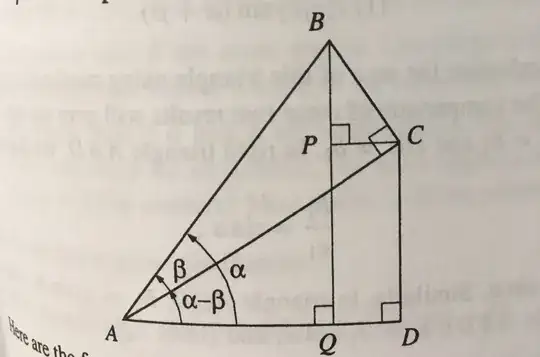I’m stuck proofing the difference formula $\sin (\alpha - \beta) = \sin \alpha \cos \beta - \cos \alpha \sin \beta$.
Given this diagram:

$$\sin (\alpha - \beta) = CD/AC = PQ/AC = (BQ-BP)/AC=BQ/AC-BP/AC$$
Now we need to relate that back to sine and cosine of alpha and beta:
$$BQ/AC = ???$$
I’m stuck here because $\sin \alpha = BQ/AB$ and $\cos \beta = AC/AB$. Multiplying those fractions together won’t give me $BQ/AC$.
I thought I had the right idea, but I’m stuck. Hints are appreciated.